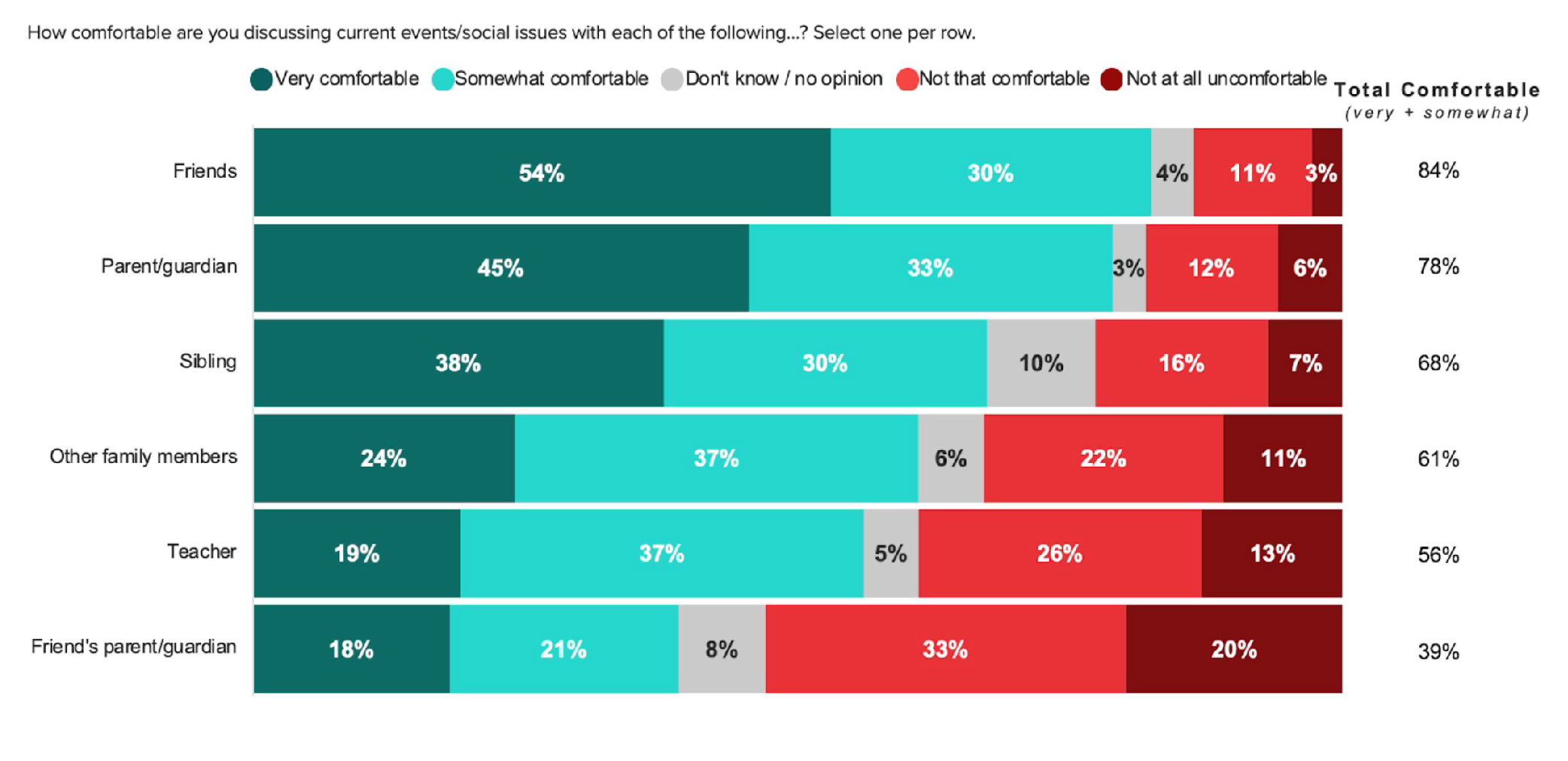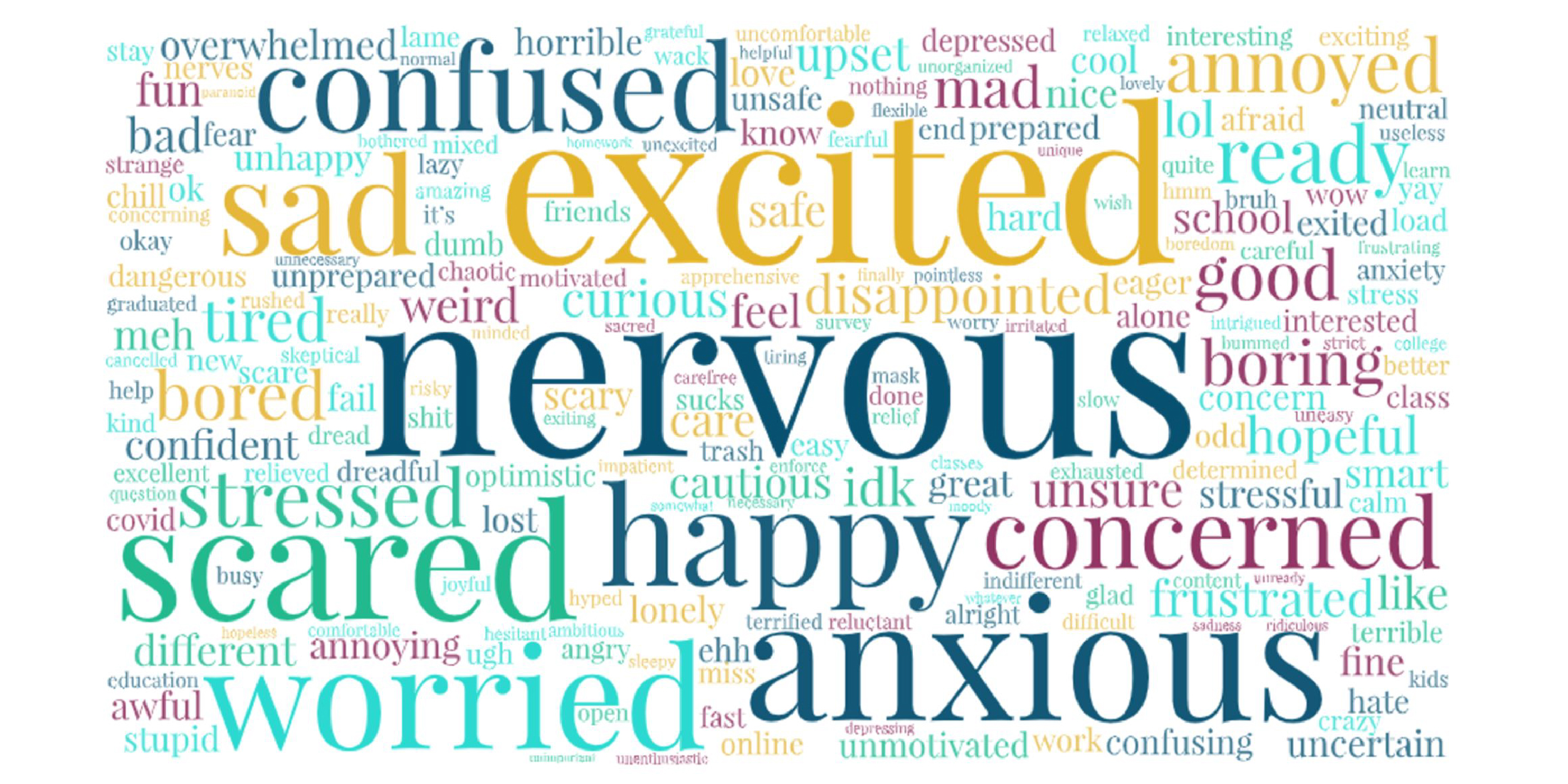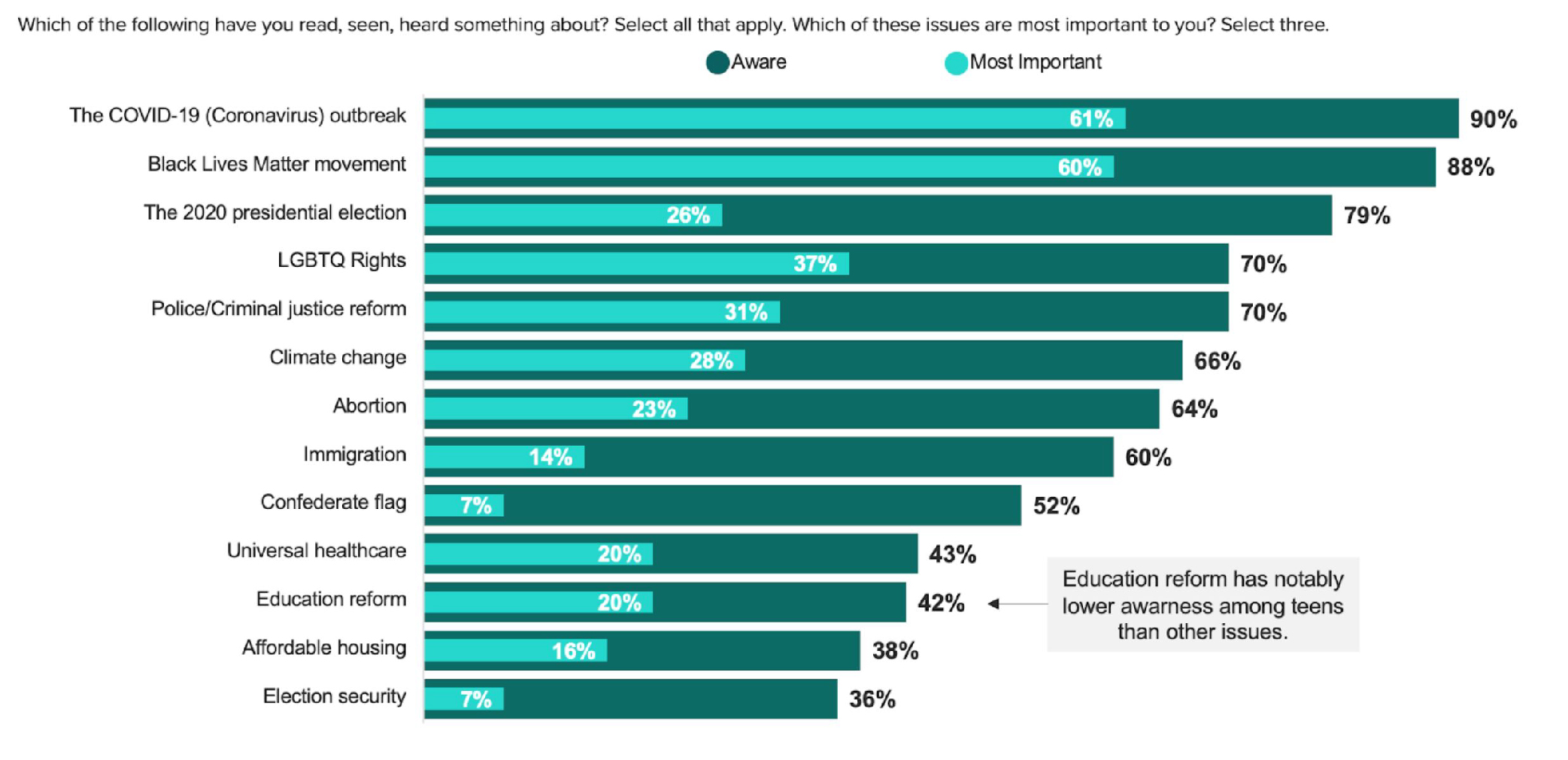Survey: But What About The Kids?
The debate over schools reopening during the pandemic has included a great deal of feedback from educators and parents. We’re not hearing as much from the students themselves.
- How are they feeling?
- Are they worried about catching the virus—and what do they think about safety protocol?
- Do they prefer remote learning or coming back to the classroom, and do they have the tools they need?
- How has the pandemic affected their social lives and what they care about?
Earlier this year, we launched our EdChoice Public Opinion Tracker in partnership with Morning Consult, which is updated monthly with results from a nationally representative sample of adults, including parents of school-age children. We also have a quarterly survey that tracks how educators are feeling about K-12 education.
Last month, we initiated our first look at how teens feel about their schooling, the pandemic and other hot topics.
Spoiler alert: Young people are just as uncertain as grownups about the world we’re living in.
One of our main reasons for surveying 13 to 18-year-olds was to gauge how they’re feeling about heading back to the classroom. We asked them to give us three words to describe going back to school. This word cloud captures those responses:
While many recent headlines have depicted students appearing not to be worried about the virus or spreading it, our survey showed that 76 percent of students are concerned about the pandemic. The vast majority of teens are concerned about the outbreak, but minority and older teens are even more concerned.
The top two reasons why students are worried are either infecting a family member (81 percent) or getting the virus (70 percent), but they’re also worried about not being able to see their friends (67 percent), missing classes (57 percent) and taking classes online (53 percent). Only 25 percent are worried about not having access to food from school.
We wanted to find out not just how students themselves were feeling about the return to school but also how seriously they thought their peers would take safety precautions. Nearly 70 percent of students reported thinking other students would take wearing masks seriously, but less than half believe their peers will socially distance and not share objects with each other.
When we asked teens their preference for returning to school, 64 percent said they’d either like to return only online or with a mix of online and in-person learning. Far fewer students—36 percent—reported wanting to come back completely in-person; 19 percent of schools are planning that approach.
Somewhat surprisingly, just over three-quarters of teens reported having internet access at home to do their online class work, a figure that’s worth probing in potential future surveys, especially if we believe students will continue to choose remote learning as an option post-pandemic. The National Center for Education Statistics reported about one in seven teens without home internet access using 2017 data.
The virus changed all of our lives and the way many of us work and interact with each other. It had similar effects on teens as they shifted away from classroom lectures, hands-on learning and working in groups. We didn’t find much variation in the places they sought academic help—search engines, online education websites and family members—but we did ask them which social platforms they use most frequently:
Finally, we asked teens to let us know what issues matter most to them right now—and who they’re most comfortable discussing those issues with.
The two most important issues—the coronavirus outbreak (61 percent) and Black Lives Matter movement (60 percent)—weren’t even close to the rest of the topics we asked about.
LGBTQ rights, police/criminal justice reform, climate change and this year’s presidential election rounded out the next tier with between 26 percent and 37 percent of teens identifying them among their three most important issues. School choice advocates, take note: Just one out of five teens ranked education reform in their top three responses. We have to figure out how to connect with this generation if we want them to become tomorrow’s advocates.
Teens reported being most comfortable discussing current events and social issues with their friends (84 percent) and parents or guardians (78 percent). They were least comfortable with teachers (56 percent) and their friends’ parents or guardians (39 percent).
 As schools reopen to varying degrees, we look forward to checking back in with this demographic group to find out how their opinions and behaviors continue to change throughout the remainder of this year and into the future.
As schools reopen to varying degrees, we look forward to checking back in with this demographic group to find out how their opinions and behaviors continue to change throughout the remainder of this year and into the future.











